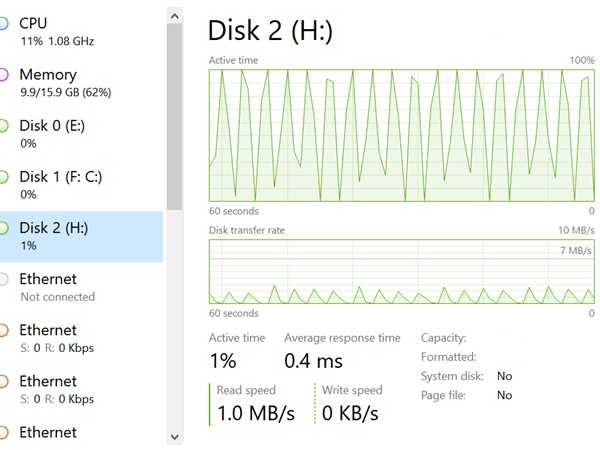
So from our previous article we have gotten Alienvault (or OSSIM) running in your own Virtualbox, and it is able to communicate with the host (your laptop). Again, the reason why we have this is for a small mini lab that you can just shoot up without worrying about doing a VPN connectivity back to the office or whereever, and just do a very basic troubleshooting or learning. It’s highly useful for us, especially we deal a lot with custom applications plugins where we need to either filter or interpret using Alienvault.
So the objective here is to first get MySQL installed and running, and then have MySQL start logging. Now, for the sake of standardisation, we are going to install MySQL Community Edition. Instead of detailing all the complexity of Windows installation, we will keep it brief: Download, click, wait, done.
The more detailed link is as below, but in all honesty, there is nothing overly difficult with clicking on the windows installation file. Locating where you downloaded it is probably a bit more difficult that the actual installation itself.
https://dev.mysql.com/doc/refman/8.0/en/windows-installation.html
Once it’s installed, (we just installed it as a service), verify that its up and running by going to the Windows services and checking for MySQL80. Or you could just run netstat – an and find the following:
TCP 0.0.0.0:3306 0.0.0.0:0 LISTENING
Next, for the sake of laziness, you probably want to add the MySQL Bin path to your windows environmental variable path: C:\Program Files\MySQL\MySQL Shell 8.0\bin\. Just go System Properties ->Advance -> Environmental Variables.
Once that is done, you can run the command
mysql -u username -p
You should be prompted with a password and you can enter that and you should be in.
Now, we are not going to go through mysql CLI commands as this isn’t the point of the article. The point here is to create some sort of logs from MySQL and fetch those logs over to Alienvault. There are many ways to do it, and it seems for windows, the easiest would be to just dump it into the event viewer and let HIDS go and fetch it. But we don’t like to do things the easy way because we are technology sadists. So the idea here is to log MySQL to a flat file and get HIDS to grab it and get Alienvault to interpret it.
Logging and MySQL does have a long history with us. We’ve written an article a few years ago on getting MySQL community edition to log queries using the MariaDB plugin: https://www.pkfavantedge.com/it-compliance/pci-dss-logging-in-mysql-community-version-with-mariadb-plugin/.
We are a big fan of the above plugin, as most of our clients tend to end up with MySQL Community Edition, which means some plugins like the official MySQL Enterprise Audit Plugin is not available for cheapskate like us. There is the Percona Audit plugin as well which we have not tried but it seems very much focused on Percona. There is also the McAfee plugin which we tried but after a bit of tinkering decided we were probably too stupid busy to make it work. So we were left with the MariaDB plugin which we got it to work for our client.
It’s still a good read but it has been a few years old. And we will definitely relook into it in the near future.
This time around, we are going to get MySQL Windows version to write the general query log into a flat file instead and have HIDS pick it up. This provides us with a few ideas of how HIDS/Alienvault can be configured to pick up any flat file, which gives you pretty much God-like powers in terms of being flexible in getting logs to your Alienvault. If we can get any flat file and create events from those, the possibility to integrate with any custom applications is endless.
To start you need to be aware of two things:
a) There is already a native logging capability in MySQL CE to log to a flat file which we will be using for illustrative purpose: the all powerful “General query” log. Why we say illustrative is that this isn’t probably a long term solution as it’s akin to turning on a debug on your app. There is a LOT of logs, because every query is logged. Useful for troubleshooting, not so cool if you have a busy server because it grows pretty quickly.
b) Windows doesn’t have a native way to send logs, except by way of WEF (Windows Event Forwarder) which basically just sends logs to a collector (windows system). It seems like an awfully clunky way to do log centralisation, so its probably better (still in 2021!) to use either a forwarder like NXLOG or install OSSEC (HIDS) as an agent to talk to Alienvault.
So for this article, we will start by enabling general query log on your Windows MySQL instance.
mysql> set global general_log_file='C:\MySQLLOG\db.log';
Query OK, 0 rows affected (2.39 sec)
mysql> set global log_output = 'file';
Query OK, 0 rows affected (0.00 sec)
mysql> set global general_log = on;
Query OK, 0 rows affected (0.00 sec)
mysql> show variables like '%general%';
+------------------+----------------------------+
| Variable_name | Value |
+------------------+----------------------------+
| general_log | ON |
| general_log_file | C:/MySQLLOG/db.log |
+------------------+----------------------------+
2 rows in set (0.01 sec)
The above series of commands basically just tells MySQL to turn on general log, and then say where the the file is located and instruct it to be a file. You can verify if it is set by the last command.
For more persistence, you can go ahead and and edit C:\ProgramData\MySQL\MySQL Server 8.0\my.ini
And include the following under the header General and Slow Logging
#General and Slow logging.
log-output=FILE
general-log=1
general_log_file="C:/MySQLLOG/db.log"
Restart your service and you should be able to see if there is a db.log file (You can name it anything).
Try to do a login with your mysql console and you should be able to see a “Connect” log and a few query logs in the flat file.
Now, the next thing is to find a way to forward these logs over to Alienvault. So you could use NXLOG (we covered that in detailed in a series here) However, that topic has been beaten to death over that series so we won’t look at that option for now.
Or we could re-explore using the HIDS (OSSEC) to capture the flat file which we started doing in this article https://www.pkfavantedge.com/pkf-avant-edge/alienvault-usm-flat-file-log-capture-part-1/ but for some reason, never finished what we started.
So for the sake of brevity, the Part 1 link should be very straightforward to follow. Install OSSEC HIDS into your laptop (which is also your MySQL server), but of course, change the OSSEC config to reflect the proper path and file of the flat file log of MySQL that you just created here.
So the conclusion of it is this:
a) You have a running MySQL server and you are able to query and log to it. I would suggest at this point to install a MySQL gui like HeidiSQL or PHPMyadmin to interact with your database. If you are fine with Workbench or CLI, then go ahead. For me, I like HeidiSQL because its clean, and very useful for simple testing and querying.
b) Your MySQL is logging into a flatfile of your choosing, every single log. Again, since this is a test, it’s fine. For a live server, be aware to have a cleanup script in place to ensure your general query log doesn’t over grow.
c) You have HIDS (OSSEC) – we use both interchangeably, so you know – installed on your laptop server, and it’s configured to pick up the logs from the flat file of MySQL that you have configured
d) On the OSSIM (Alienvault) – we use both interchangeably, so you know – on your Virtualbox, you have enabled HIDS to logall so the raw log is now dumped into archives.log (which we would recommend to remove the logall directive once we finish configuring, since this file will also grow quickly on live environment).
At this point, if you were to open up the
/var/ossec/logs/archives/archives.log of your Alienvault, you would observe that the format of the log coming in is
2021 Feb 22 09:41:42 (Host-192-168-1-111) 192.168.1.111->\MySQLLOG/db.log 2021-02-22T09:41:42.271529Z 28 Query SHOW CREATE TABLEdbtest.persons
Compared to the log from the database file itself
2021-02-22T09:41:42.271529Z 28 Query SHOW
CREATE TABLEdbtest.persons
So it is actually word for word, the actual log itself. That’s great but aside from centralisation, it’s actually not doing anything (sort of like Batman in Justice League). It’s just there, with no purpose.
In our next article (which we will call Flat file log capture part 2), we will break down the structure in which logs flow into Alienvault and how ultimately we can get these logs to eventually be seen in the SIEM event.
Meantime, feel free to drop us an email for any SIEM/Alienvault matters at alienvault@pkfmalaysia.com.

